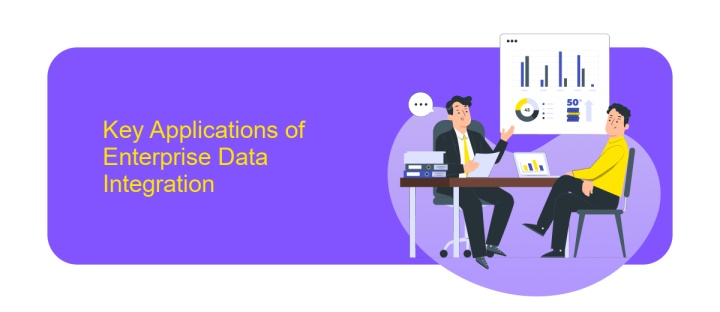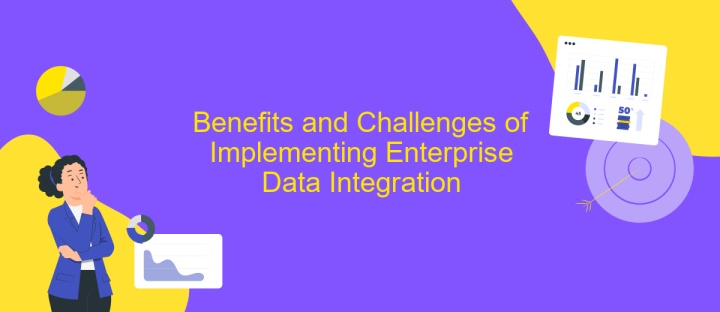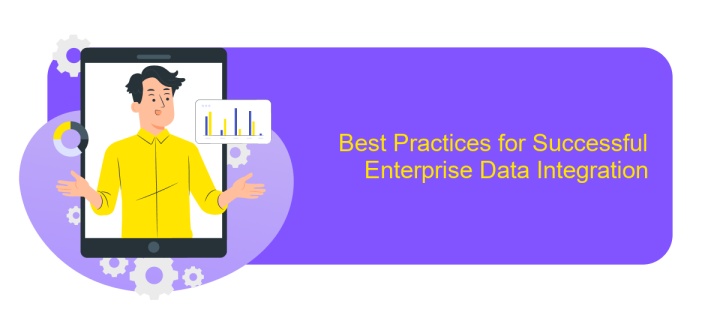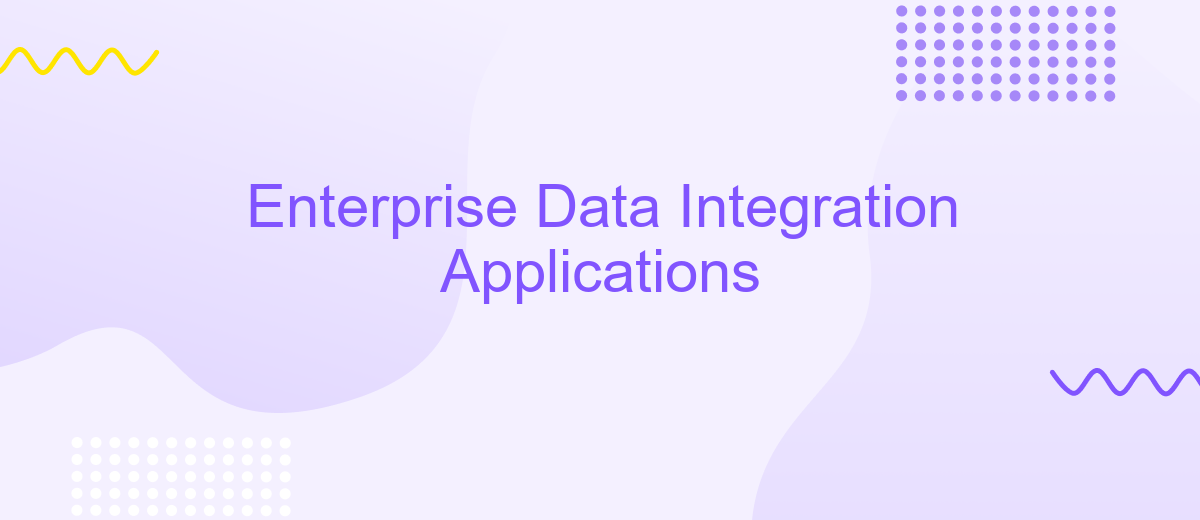Enterprise Data Integration Applications
Enterprise Data Integration Applications are pivotal in today's data-driven business landscape, enabling seamless connectivity and data flow across diverse systems. These applications empower organizations to integrate, manage, and analyze data from multiple sources, facilitating informed decision-making and operational efficiency. As businesses increasingly rely on data to gain a competitive edge, understanding and implementing robust data integration solutions becomes essential for achieving strategic objectives and driving innovation.
Understanding Enterprise Data Integration
Enterprise Data Integration (EDI) is a critical process that allows organizations to consolidate data from various sources into a unified system. By integrating data, businesses can ensure consistency, improve accessibility, and enhance decision-making processes. EDI enables seamless communication between different departments and external partners, facilitating a more efficient and streamlined operation. This integration is essential for organizations aiming to leverage data analytics and drive innovation.
- Improved data quality and accuracy
- Enhanced operational efficiency
- Better decision-making capabilities
- Streamlined business processes
- Increased agility and responsiveness
In the rapidly evolving digital landscape, enterprise data integration is more relevant than ever. Organizations must adapt to new technologies and data sources, making integration a continuous and dynamic process. By prioritizing EDI, companies can maintain a competitive edge, foster innovation, and create more value from their data assets. As businesses grow, the complexity of data integration increases, necessitating robust strategies and tools to manage this vital aspect effectively.
Key Applications of Enterprise Data Integration

Enterprise Data Integration is pivotal for organizations seeking to streamline their operations and enhance decision-making. One key application is the consolidation of data from disparate sources, such as CRM, ERP, and cloud services, into a unified platform. This integration not only ensures data consistency but also facilitates real-time analytics, enabling businesses to gain actionable insights and improve their strategic planning. By leveraging integrated data, companies can enhance customer experiences, optimize supply chains, and drive innovation.
Moreover, enterprise data integration plays a crucial role in automating business processes. Tools like ApiX-Drive simplify the integration setup, allowing organizations to connect various applications without extensive coding. This service helps automate data transfer between systems, reducing manual errors and saving time. By utilizing such integration platforms, businesses can focus on core activities, increase operational efficiency, and remain competitive in a rapidly evolving market. As data continues to grow in volume and complexity, the importance of robust data integration solutions becomes increasingly apparent.
Benefits and Challenges of Implementing Enterprise Data Integration

Implementing enterprise data integration offers numerous advantages, enhancing business efficiency and decision-making. By consolidating data from disparate sources, organizations can achieve a unified view of their operations, leading to more informed strategic decisions. This integration facilitates real-time data access, enabling businesses to respond swiftly to market changes. Moreover, it improves data quality and consistency, reducing redundancies and errors that can occur with siloed data. Ultimately, these benefits contribute to cost savings and a competitive edge in the marketplace.
- Improved data quality and consistency.
- Enhanced decision-making capabilities.
- Real-time data access and analysis.
- Cost savings through streamlined operations.
- Competitive advantage through unified insights.
Despite its benefits, implementing enterprise data integration presents several challenges. The process can be complex and resource-intensive, requiring significant investment in technology and expertise. Data security and privacy concerns also arise, as integrated systems may expose sensitive information to potential breaches. Additionally, aligning different data formats and standards across systems can be daunting. Organizations must carefully plan and execute integration strategies to overcome these hurdles and fully leverage the potential of their data assets.
Best Practices for Successful Enterprise Data Integration

Successful enterprise data integration is crucial for organizations aiming to harness the full potential of their data assets. A well-executed integration strategy enables seamless data flow across systems, enhancing decision-making and operational efficiency. To achieve this, businesses must adopt best practices tailored to their unique needs and infrastructure.
One fundamental practice is to establish a clear data governance framework. This involves defining data ownership, ensuring data quality, and setting data security standards. Additionally, organizations should prioritize scalability and flexibility in their integration solutions to accommodate future growth and technological advancements.
- Invest in robust data integration tools that support diverse data formats and sources.
- Implement real-time data processing to facilitate timely insights and responses.
- Ensure thorough documentation and training for all stakeholders involved in data integration processes.
- Continuously monitor and optimize data integration workflows to maintain efficiency and accuracy.
By adhering to these best practices, enterprises can create a cohesive data ecosystem that empowers them to make informed decisions and remain competitive in a data-driven world. Regularly reviewing and updating integration strategies is essential to adapt to evolving business needs and technological landscapes.


Future Trends in Enterprise Data Integration
The future of enterprise data integration is poised to be shaped by the increasing adoption of artificial intelligence and machine learning technologies. These advancements are expected to automate complex data processes, enhance data accuracy, and provide real-time insights, enabling businesses to make more informed decisions. As organizations continue to amass vast amounts of data from diverse sources, the demand for seamless integration solutions will grow. This trend will likely lead to the development of more sophisticated tools that can handle large-scale data integration tasks efficiently.
Moreover, the rise of cloud-based platforms and services is set to revolutionize how enterprises manage data integration. Solutions like ApiX-Drive are already simplifying the process by offering user-friendly interfaces and automated workflows, allowing businesses to integrate applications without extensive technical expertise. As data privacy regulations become stricter, future integration solutions will also prioritize security and compliance, ensuring that data is not only integrated seamlessly but also protected. Overall, the future of enterprise data integration will be characterized by increased automation, enhanced security, and greater accessibility.
FAQ
What is Enterprise Data Integration and why is it important?
How can businesses ensure data quality during integration?
What are the common challenges faced in Enterprise Data Integration?
How can automation help in Enterprise Data Integration?
What factors should be considered when choosing an Enterprise Data Integration tool?
Apix-Drive is a simple and efficient system connector that will help you automate routine tasks and optimize business processes. You can save time and money, direct these resources to more important purposes. Test ApiX-Drive and make sure that this tool will relieve your employees and after 5 minutes of settings your business will start working faster.

